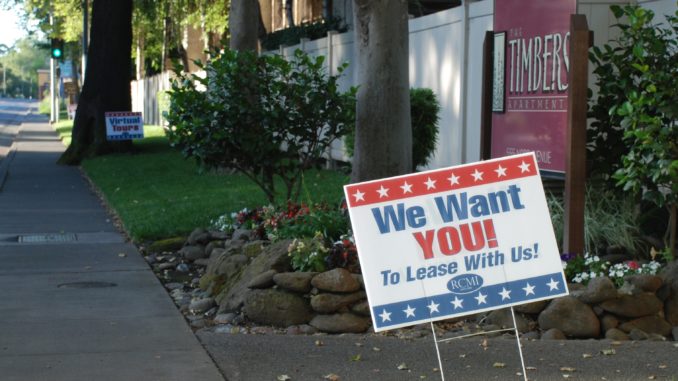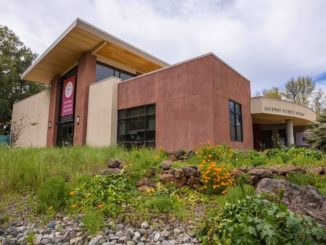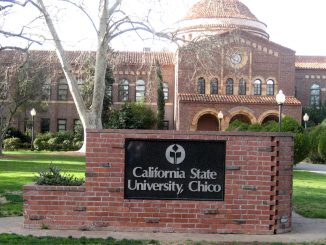
When Chancellor Timothy White announced May 12 that all 23 campuses of the California State University system would teach classes predominantly online in the fall, political and business leaders in Chico went into a tailspin.
The city already faced a $7 million municipal government budget deficit as a result of coronavirus shutdowns that included Chico State classes transitioning to web platforms back in March. With the university shuttered longer, the ripple effects on the local economy would be devastating, particularly downtown.
That message echoed at the May 19 City Council meeting that followed White’s announcement. Councilmen Sean Morgan, Karl Ory and Randall Stone—each a former Chico mayor—and current Mayor Ann Schwab all wanted the city to ask White to reconsider. Stone and Vice Mayor Alex Brown, who serve with Schwab on the city’s Town and Gown Committee, sought to engage the university.
Chico State President Gayle Hutchinson already had an appeal, of sorts, underway. She and her administration, notably Vice President of Business Affairs Ann Sherman, were creating a plan to allow for more courses taught on campus. They will ask the chancellor to let Chico State relax his restrictions on in-person classes, balancing health needs for social distancing with educational needs for hands-on, group settings.
Whatever the outcome, Chico will not become a ghost town, as the university projects at least half the student body returning this fall regardless—whether to take classes online or on campus.
Hutchinson and Sherman gave a rough outline of the plan, as well as explained coronavirus impacts, at a special town and gown meeting Thursday night (May 28) on Zoom, which drew 120 community members along with the participants. By Schwab’s invitation, the administrators are scheduled to present the full plan at Tuesday’s City Council meeting.
“It’s still not what we want; we’d like that in-person [instruction as usual],” Hutchinson said. “We have to remember that public health and safety truly comes first, and now we’re trying to thread the needle, to find that balance between keeping the public healthy—taking care of all of us, including our most vulnerable populations—and trying to keep the economy rolling.”
The university projects an enrollment decline of 13.7 percent. Based on last year’s figure of 16,673, that’s a decrease of 2,284 students. The estimate accounts for students deferring due to the pandemic, though not a possible addition of adults seeking career advancement while unemployed, as commonly occurs during an economic downturn. Sherman noted that the enrollment date is June 1, “so in about a week we should have some better numbers … although admissions will continue through the summer.”
Chico State will cut on-campus housing occupancy in half to increase spacing for residents. Capacity will drop from 2,300 to 1,036, with priority to incoming freshmen and sophomores.
The university draws 28 percent of its student body from its 12-county service region in the northeast corner of the state. Most students come from Southern California and the Bay Area. Chico State does not have demographic data on students who live off campus.
Dan Herbert, the university’s director of off-campus services (and another former mayor), said property managers experienced 45 percent to 50 percent vacancy in student apartments after spring break, when Gov. Gavin Newsom’s stay-at-home orders took effect.
“With that [figure], and with I wouldn’t call a robust leasing activity but a constant leasing activity going on in our campus community, we would not be surprised at all if 50 [percent] to 60 percent of our students return,” he said. “And I talk to a lot of parents … saying over and over again that they don’t want their son or daughter to miss out on the college experience in Chico, so they want their student to return to Chico, to come to Chico State.
“I think it’s imperative on us to figure out ways to do that safely, as a community.”
Planning ahead
To meet the CSU chancellor’s proviso, Chico State would offer at least 85 percent of classes online this fall. That would limit the number of courses on campus to roughly 645.
The university’s new plan, which Hutchinson expects to have completed Monday or Tuesday, will call for exemptions permitting in-person instruction for 400 class sections. Subjects will include agriculture, biology, chemistry, computer science, construction management, engineering, kinesiology, nursing and, possibly, studio arts.
“That will bring roughly 3,000 students onto the campus,” she continued, “hopefully not all at one time. We’ll spread them out. We’ve reconfigured, if you will, all the learning spaces where our students will come in person to learn in ways that comply with area health suggestions for resocializing and reopening.”
Hutchinson said the chancellor requires such proposals to address courses, residence halls, dining halls and athletics. (Chico State’s conference, the California Collegiate Athletic Association, has canceled fall sports competition.) On top of that, the university’s plan also addresses extracurricular activities and measures to prevent exposure to coronavirus.
“I’m quite confident that he’ll approve it,” Hutchinson said of the chancellor’s review of the plan, “but there may be some adjustments that need to be made.”
In her introductory remarks, Hutchinson presented PowerPoint graphics showing that the university brings $156.8 million to the local economy in salaries, $9.7 million in contracts with local vendors and $370.2 million in student spending. With state finances reeling from the coronavirus emergency, Chico State is bracing for a budget hit of $30.6 million.
Along with the short-range plan for fall, administrators are looking ahead 18 months, forecasting lean times and recovery in four years.
“We need to make sure we’re prepared for a long-term future that may mean a smaller institution than the one we’ve had the last few years,” Sherman said, adding that indicators from the CSU and economists suggest it will take until 2024 “for the state to come back toward [being the] economic engine that it has been, so we’re looking at the end of that four-year window as [being] fully prepared to come roaring out of the gate, continuing that success and being viable for the long haul.”
The council members on the Town and Gown Committee—Brown, Schwab and Stone—pledged to hold another meeting over the summer to continue the interface.
“One of the most difficult things during the pandemic, for me, has been uncertainty,” Schwab said. “The university and the city have a strong relationship, and as we move forward, we will take each other into account … the university and the city working together. We’re [greater] than the sum of our parts.”




Be the first to comment